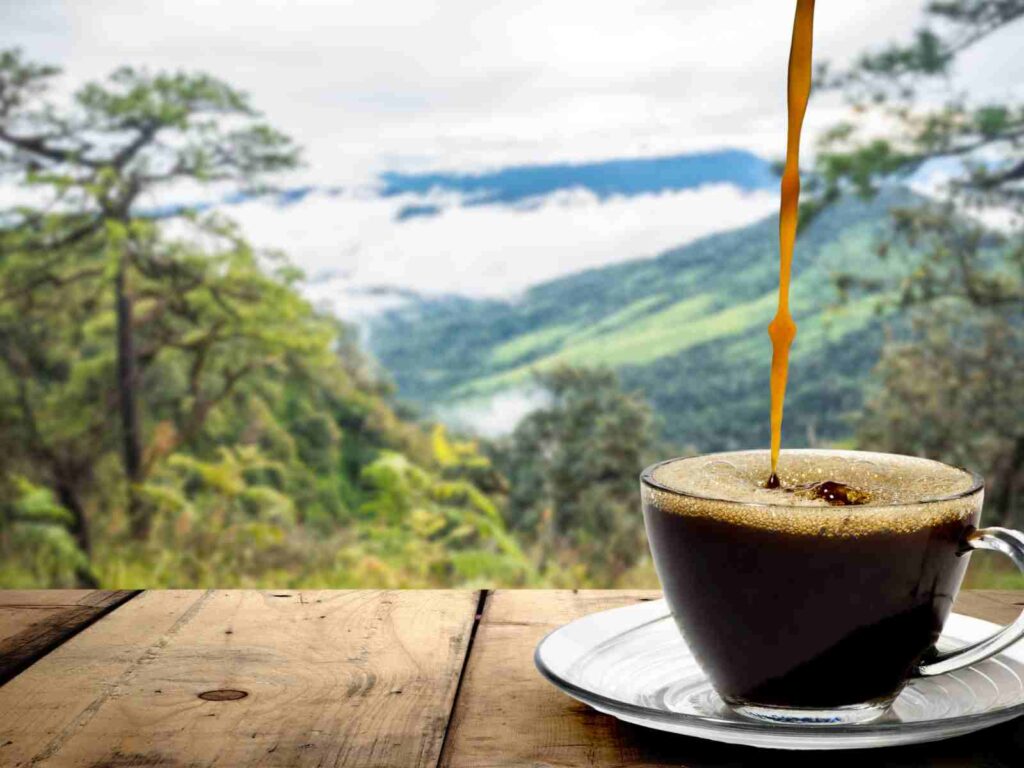One of the most consumed drinks worldwide is coffee. We all adore the delectable drink so much that billions of cups are drunk annually worldwide! It’s no secret that alcohol plays a big role in our daily lives, whether it’s consumed as part of a routine or enjoyed while catching up with friends. Some people find that they cannot begin their day without a steaming hot cup of coffee. They sometimes refer to themselves as “coffee addicts” since they love coffee so much. And we are all too aware of that. But having a cup or cups of coffee every day isn’t always a harmful habit.
Where Coffee Came From
Coffee has a long history that stems from centuries of oral tradition in Yemen, Ethiopia, and Somalia. In the fifteenth century, Mecca was already aware of it. Additionally, coffee was used in Yemen Sufi monasteries in the fifteenth century to help with concentration during prayers. Later, in the early 16th century, coffee made its way to the Levant, where it sparked debate in Mamluk and Ottoman societies on its halal status.

Through commercial Mediterranean trade channels, coffee reached Italy in the second half of the 16th century. Meanwhile, Central and Eastern Europeans became familiar with coffee through Ottoman influence. It made its way to India and the East Indies by the middle of the 17th century.
Coffee houses emerged in Western Europe in the late 17th century, with the first cultivation of coffee in the New World by Gabriel de Clieu in 1720. By 1788, Saint-Domingue supplied half the world’s coffee. Brazil became the world’s largest coffee producer by 1852, but since 1950, other major producers have emerged, including Colombia, Ivory Coast, Ethiopia, and Vietnam. Modern production techniques and mass productization have made coffee a household item.
How Coffee Became Popular Everywhere

Tea remained the preferred beverage in the New World until 1773, when colonists rebelled against King George III‘s steep tea tax, despite the quick rise of coffee shops. The Boston Tea Party uprising permanently altered Americans’ taste for coffee as their preferred beverage. Following the Boston Tea Party, coffee gained popularity. Transitioning from tea to coffee was considered patriotic.
Coffee trees were grown all over the world as a result of missionaries, tourists, traders, and colonists continuing to bring coffee seeds to new places. Plantations were built on rough mountain ranges and in gorgeous tropical rainforest. While some crops did well, others did not last very long. Coffee economies gave rise to new nations. People made and lost fortunes. Coffee was one of the most lucrative export crops in the world at the end of the 18th century.
Coffee’s Impact on People and Society
Coffee has influenced political and economic history. The cultivation and trade of coffee have been important economic drivers in many nations. Due to colonial powers’ attempts to regulate the production and commerce of coffee inside their own territories, coffee has also been a cause of exploitation and warfare.
Coffee culture has been changing over the past few years, with a focus on fair trade, sustainability, and handcrafted specialty coffee production. As a result, there is now a heightened appreciation for the art of coffee roasting and brewing and a deeper comprehension of the effects that coffee production has on the environment and society. Coffee has been linked to several health advantages. Research has indicated that drinking coffee can lower the chance of developing a number of illnesses, such as liver cancer, Parkinson’s disease, and type 2 diabetes. It has also been discovered to boost alertness, improve cognitive function, and improve physical performance.
Cool Things you should know about Coffee

Finland has the largest population of coffee drinkers.
The International Coffee Organization estimates that an adult Finn consumes 27.5 pounds of coffee annually. That is in contrast to the pitiful 11 pounds per American.
Only two states in the union produce coffee.
The gift of the United States to the world of coffee is kona coffee. Hawaii’s weather is ideal for collecting coffee beans since the bean usually grows best in equatorial climates. Numerous coffee farms in California have just entered the market and are producing expensive premium bags.
A pound of the priciest coffee in the world may cost over $600.
The excrement of an Asian palm civet yields one of the most sought-after kinds. The fruit that the cat-like creature eats, including coffee cherries, is indigestible for the beans. The smoother, less acidic beverage known as kopi luwak is made from the expelled seeds, although animal welfare advocates have expressed disapproval of the production process.
There have been several attempts to outlaw coffee.
Leaders in Mecca banned the beverage in 1511 because they thought it encouraged extremist thinking. A few Italian clergymen attempted to outlaw coffee in the sixteenth century on the grounds that it was “satanic.” But in 1600, Pope Clement VII overturned the ban on coffee and had it baptized because he was such a coffee lover.
Coffee consumers typically lead longer lives.
Studies have connected moderate intake (about three to four cups daily) to a longer lifespan as well as a lower risk of Parkinson’s, type 2 diabetes, and cardiovascular disease.
Caffeine-free does not equate to decaf.
Actually, two to twelve milligrams of caffeine can be found in an eight-ounce brewed cup of decaf coffee. Comparatively, a typical cup of coffee contains 95–200 mg of caffeine, whilst a can of cola contains about 23–35 mg.
Also Read
- Honduras Coffee Culture; A Story of Beans and Traditions
- Embark on a Flavor Quest: Uncover the World’s Most Distinctive Coffee Tastes
Conclusion
Coffee has a deep history and is full with fascinating facts. Coffee is also a highly modern commodity because of the adoration for everything related to it that has led both big and small businesses to enter the market for its production and trade. Two of the main things that enable many of those businesses to succeed in the highly competitive coffee trading market are technological advancements and improvements in the coffee trading sector.
Because coffee enthusiasts are always looking for new ways to enjoy their beloved beverage, coffee culture is always evolving. To fulfill these increased demands, production, trading, and distribution techniques have changed, but much more has to be improved. Thus, further research and development into coffee will be necessary.

